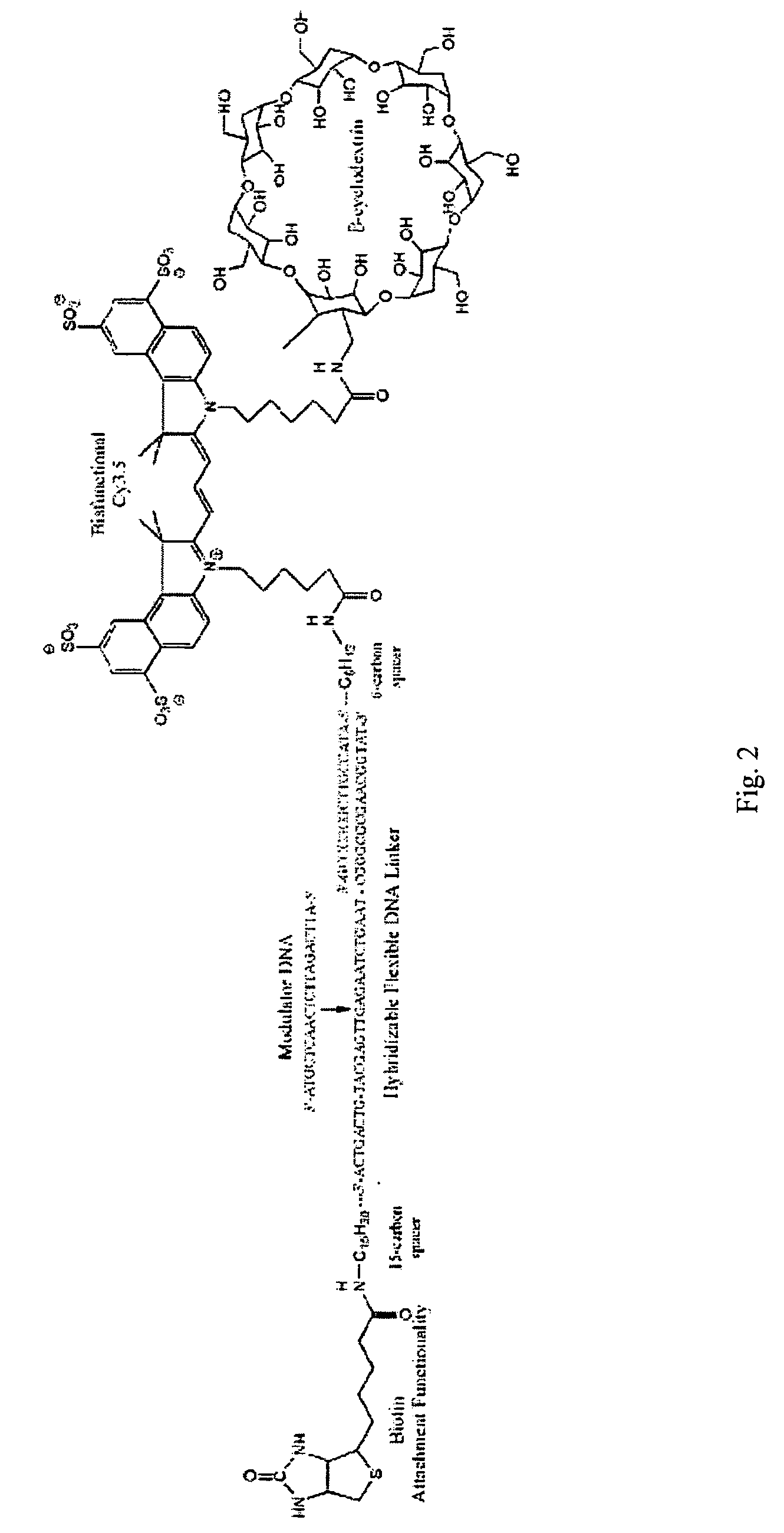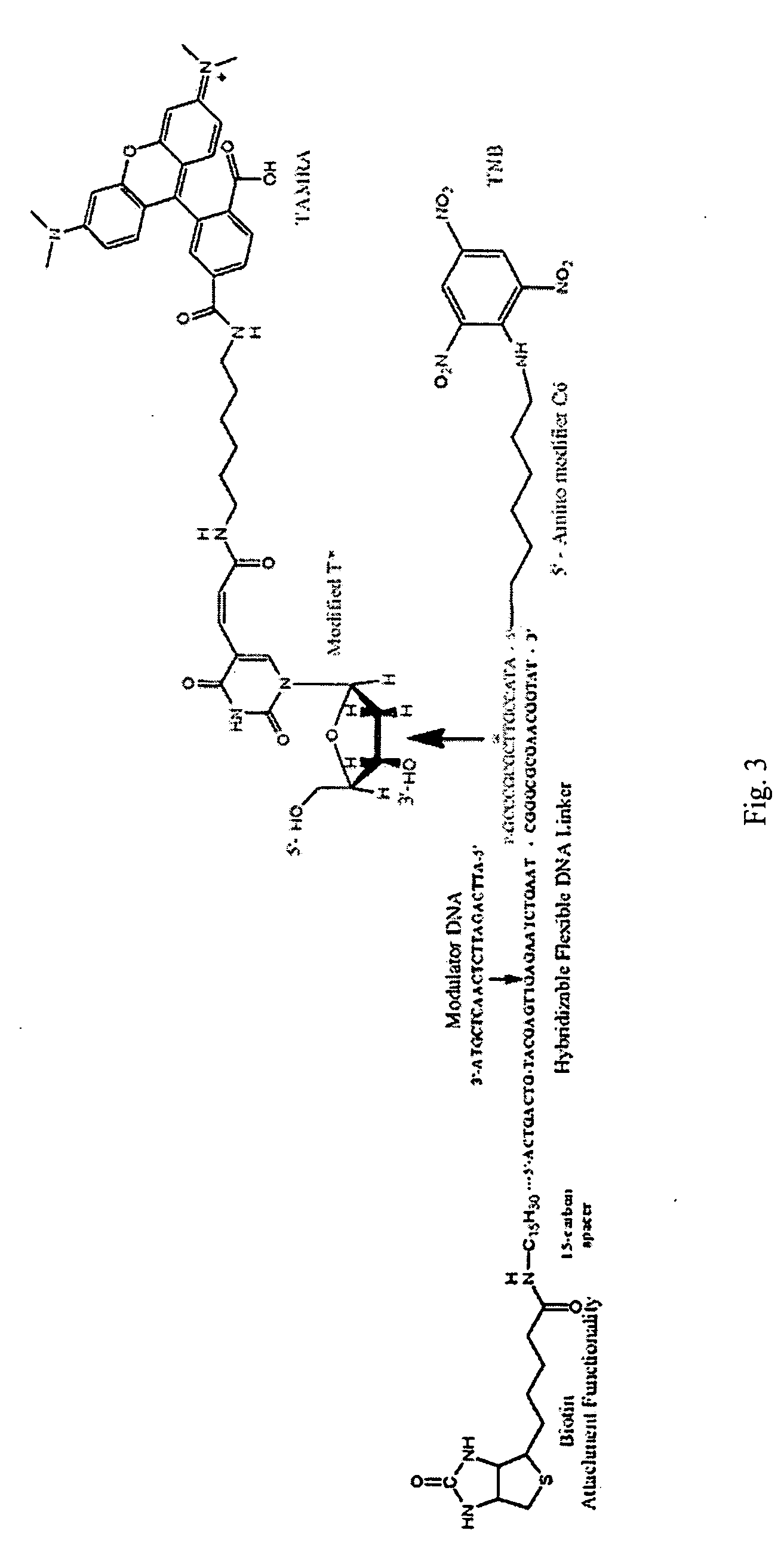Reagentless and reusable biosensors with tunable differential binding affinities and methods of making
a biosensor and affinity technology, applied in the field of reusable biosensors with tunable differential binding affinities and making methods, can solve the problems of limiting the lifetime of the sensor, increasing the test cost and logistical demands for performing analysis, and complex robotics of fielded biosensors
- Summary
- Abstract
- Description
- Claims
- Application Information
AI Technical Summary
Benefits of technology
Problems solved by technology
Method used
Image
Examples
example 1
[0047] Maltose Binding Protein.
[0048] In this assembly, the bio-recognition elements employed are engineered variants of E. coli maltose binding protein (MBP). MBP, a well-characterized member of the bPBP superfamily, has been used extensively for prototyping purposes in the previously described biosensors, as well as in redox- and quantum dot-based hybrid FRET biosensors. Binding of maltose to MBP is accompanied by a conformational change; however, the FRET-based biosensor does not depend on a change in conformation for signal generation.
[0049] As illustrated in FIG. 4a, Quencher-dye (60) labeled biotinylated E. coli maltose binding protein (MBP) (10) bound in a specific orientation to a NeutrAvidin-coated surface (30) is employed as a biorecognition element (10). To complete sensor formation, a flexible arm module (20) comprised of a flexible biotinylated DNA oligonucleotides (115), a fluorescence resonance energy transfer (FRET) donor dye (60), and a dista...
example 2
TNT Biosensor
[0085] The self-assembled modular sensing strategy can be applied to the detection of an analyte completely unrelated to maltose, namely, 2,4,6-trinitrotoluene (TNT), by altering two modules of the sensor assembly. Using the same sensor platform, a dye-labeled anti-TNT single-chain Fv antibody fragment (R-TNTscFv) was substituted for the MBP bioreceptor portion of the sensor and the multifunctional tether arm was modified to contain a dye attached to a modified internal base. The DNA arm is further modified to terminate with the TNT analogue 1,3,5-trinitrobenzene (TNB). FIGS. 5a and 5b schematically depict the TNT sensor. The R-TNTscFv portion is allowed to bind the TNB analogue, bringing both dyes into proximity, establishing a baseline level of FRET, and this complex is then self-assembled on a NA surface. Addition of TNT to the sensor solution results in a concentration-dependent change in FRET. In this configuration, the sensor retains its analyte specificity yet c...
PUM
| Property | Measurement | Unit |
|---|---|---|
| Temperature | aaaaa | aaaaa |
| Hydrophobicity | aaaaa | aaaaa |
| Affinity | aaaaa | aaaaa |
Abstract
Description
Claims
Application Information
 Login to View More
Login to View More - R&D
- Intellectual Property
- Life Sciences
- Materials
- Tech Scout
- Unparalleled Data Quality
- Higher Quality Content
- 60% Fewer Hallucinations
Browse by: Latest US Patents, China's latest patents, Technical Efficacy Thesaurus, Application Domain, Technology Topic, Popular Technical Reports.
© 2025 PatSnap. All rights reserved.Legal|Privacy policy|Modern Slavery Act Transparency Statement|Sitemap|About US| Contact US: help@patsnap.com



